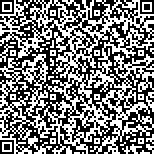下载中心
优秀审稿专家
优秀论文
相关链接
摘要

三维计算机模拟模型是遥感辐射传输机理研究的重要内容,在复杂地表正向模拟和遥感反演中扮演着重要角色。经过最近20年的发展,三维计算机建模研究取得了显著进展,在地表辐射传输过程分析、模型和算法的验证及遥感反演等方面应用广泛。为了更加充分理解三维计算机模拟模型的发展和模型间的差异,及探讨如何将其更好的应用于生活、生产,本文对三维计算机模拟模型在光学遥感的研究进行了综述。本文从模型的原理、应用和发展趋势3个方面展开了论述。首先,简要介绍了光线追踪方法和辐射度方法的原理及现有的模型;然后,对三维计算机模拟模型在遥感的主要应用进行了总结;最后,对模型未来的发展趋势展开了讨论,从运行效率、模拟精度和功能集成等方面存在的问题和需求出发,分析了三维计算机模拟模型发展和遥感应用的趋势。随着复杂地表遥感建模研究的深入,计算机技术的发展和多源遥感数据特别是高时空分辨率数据的应用,三维计算机模拟模型将在遥感理论研究和应用发挥更加重要的作用。
The Three-Dimensional (3D) computer simulation model is an important part of remote sensing studies, especially for complex surfaces including mixed vegetated scenes, urban area, and mountain area. After 20 years of development, the 3D computer simulation has made remarkable progress, and has been widely used in the analysis of surface radiative transfer process, the validation of simplified models/algorithms and retrieved remote sensing products. Recently, there has been a surge of interest in the high-resolution remote sensing data obtained from both satellite- and Unmanned Aerial Vehicle (UAV)-board sensors, which have heightened the need of 3D models in remote sensing simulation and inversion researches at fine scales. However, few studies have focused on the difference among models and further modifications. In order to fully understand the development of 3D remote sensing models and to explore how to better serve applications in different fields using these models, this paper reviews the research of 3D remote sensing models in optical remote sensing, which wavelength range encompasses the visible, near infrared and thermal infrared bands. In this paper, the principle, application, and development trend of models are discussed. Firstly, the modelling strategies based on ray tracing /flux tracing and radiosity theories are introduced and then some existing models are briefly compared. Then, the typical applications of 3D computer simulation models in optical remote sensing are summarized. A lot of literature has published on Bidirectional Reflectance Distribution Function (BRDF), Directional Brightness Temperatures (DBT), Leaf Area Index (LAI) and Fractional Vegetation Cover (FVC), in which the 3D model serves as not only a static tool as data generator in validation and analysis processes but also a dynamic tool for remote sensing inversion directly. Finally, this paper provides some insights for the future development trend of the model. Three perspectives can be performed in the future: (1) all 3D models suffer from slow operation speed, thereby models should be improved associated with operation efficiency such as using new Graphics Processing Unit (GPU) devices; (2) The main advantage of 3D models lies in its accurate simulation. Then, refine the simulation and replacing the empirical or semi-empirical processes by those physical-based must be performed. At the same time, the evaluation of 3D models should be further promoted based on multiple types of measurements from field and UAV-based experiments. In addition, (3) since multiple-source remote sensing data can be obtained, a comprehensive model based on not only radiative transfer but also interdisciplinary theories associated with evapotranspiration and fluorescence would promote its ability to explain the surface phenomena. With the in-depth study of remote sensing modeling for complex surfaces, the 3D computer model will play a more vital role in the research and application of remote sensing in the future.

